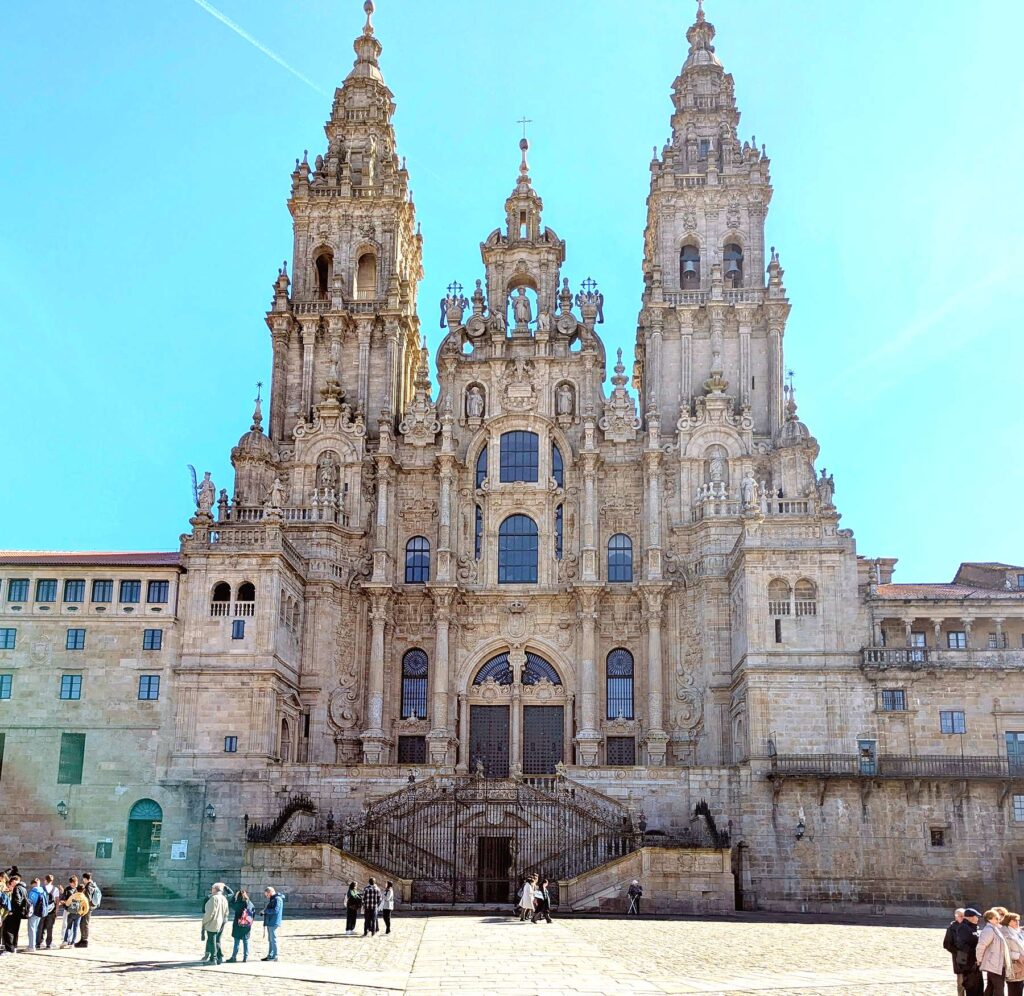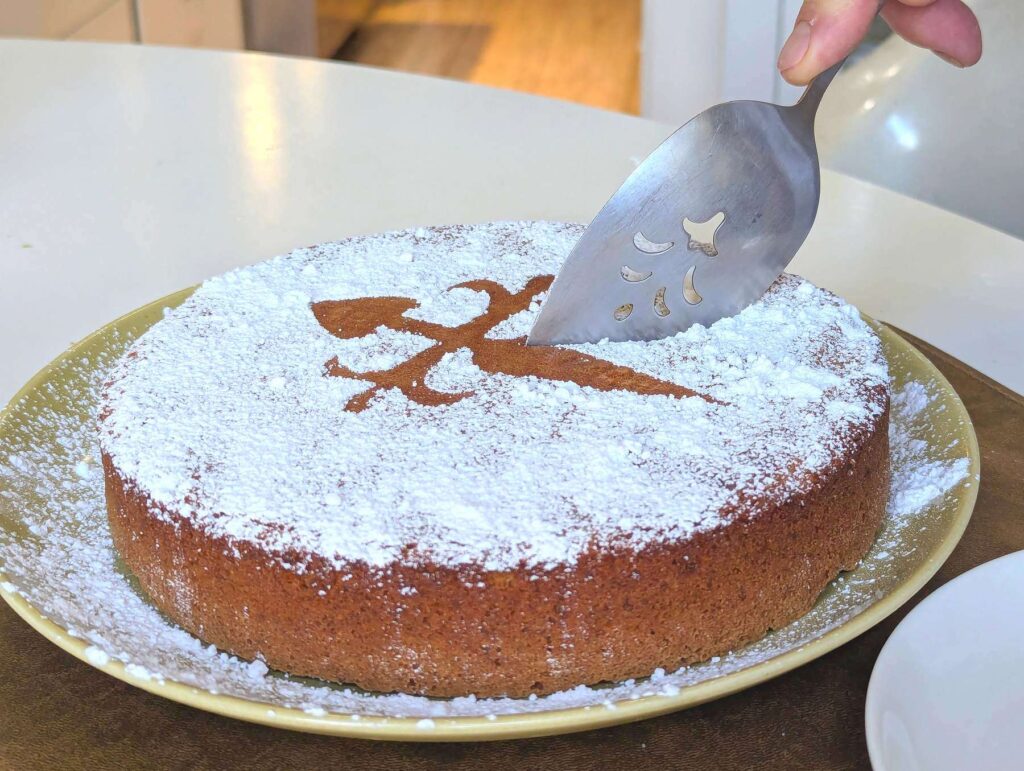
We first tasted a tarta de Santiago at a little restaurant in Santiago de Compostela. We were seated outdoors at a small sunny table enjoying the midday menu del día. The food was homey but good: a Galician tuna empanada and simple roast chicken.

Even better, we could watch a steady stream of pilgrims leave the Pilgrim’s Office where they certified the conclusion of their journey and headed to the cathedral (at right) that holds the purported remains of the apostle St. James. Their sense of joy, relief (and maybe even disbelief) was palpable.
When it came time for dessert, we felt there was really only one right choice. We bypassed the flan option in favor of the city’s signature tarta de Santiago. From the time we reached town, we’d been admiring the tart in bakery windows. It was easy to spot: The cruz de Santiago (or cross of St. James) was outlined in powdered sugar on the top.
Tracking down food origin stories is always tricky. It’s widely believed that the lightly sweetened almond tart originated in the Middle Ages as a sweet served along the Camino de Santiago, the Christian pilgrimage route that concludes in Santiago de Compostela in the Spanish region of Galicia. The earliest written reference in 1577 describes an almond tart served to a bishop visiting the pilgrimage city. The first ‶modern″ version was described in 1838 by a confectioner named Luis Bartolomé de Leybar. In 1924, Santiago’s Casa Mora bakery began decorating the cake with powdered sugar outlining the cruz de Santiago. Since 2006, the cake has been regulated as a Protected Geographical Indication, or PGI. It must be produced in Galicia from certain specified ingredients.
We don’t live in Galicia, so we are free to intrepret the cake however we wish. Since we use almond flour instead of ground almonds, we added a touch of Amaretto to boost the almond flavor. Aficionados of the cake argue whether lemon or orange zest is more traditional. We used both.
TARTA DE SANTIAGO
This classic dessert resembles many other flourless Spanish cakes. But it’s distinguished by the stencil of the distinctive cross of Saint James, or cruz de Santiago. Many a pilgrim enjoys a slice upon arriving in Santiago de Compostela after days or weeks on the Camino de Santiago pilgrimage route.
Serves 6-8

Ingredients
- 250g white sugar
- 5 eggs
- 250g almond flour (or ground blanched almonds)
- 1 teaspoon Amaretto liqueur
- zest of 1 lemon
- zest of 1 mandarin orange
- 2 tablespoons confectioner’s sugar for the topping
Directions
Set oven to 325 F (160C). Grease a 9-inch cake pan and line with a round of parchment paper.
In food processor, grind the sugar until it reaches a fine consistency. (Or use caster sugar, as the Brits call it.)
In a large bowl, beat the eggs until foamy. Add ground sugar and beat until thick and fluffy. Add almond flour, Amaretto, and citrus zests. Beat until well-incorporated.
Pour the mixture into the cake pan and bake for 40-50 minutes, until the top is golden. Leave to cool before removing from pan by using a spatula under the parchment.
Transfer cake to an oversized plate. Lay stencil on top and dust with confectioner’s sugar. Using the tip of a knife, carefully lift off stencil.
Slice and serve.
